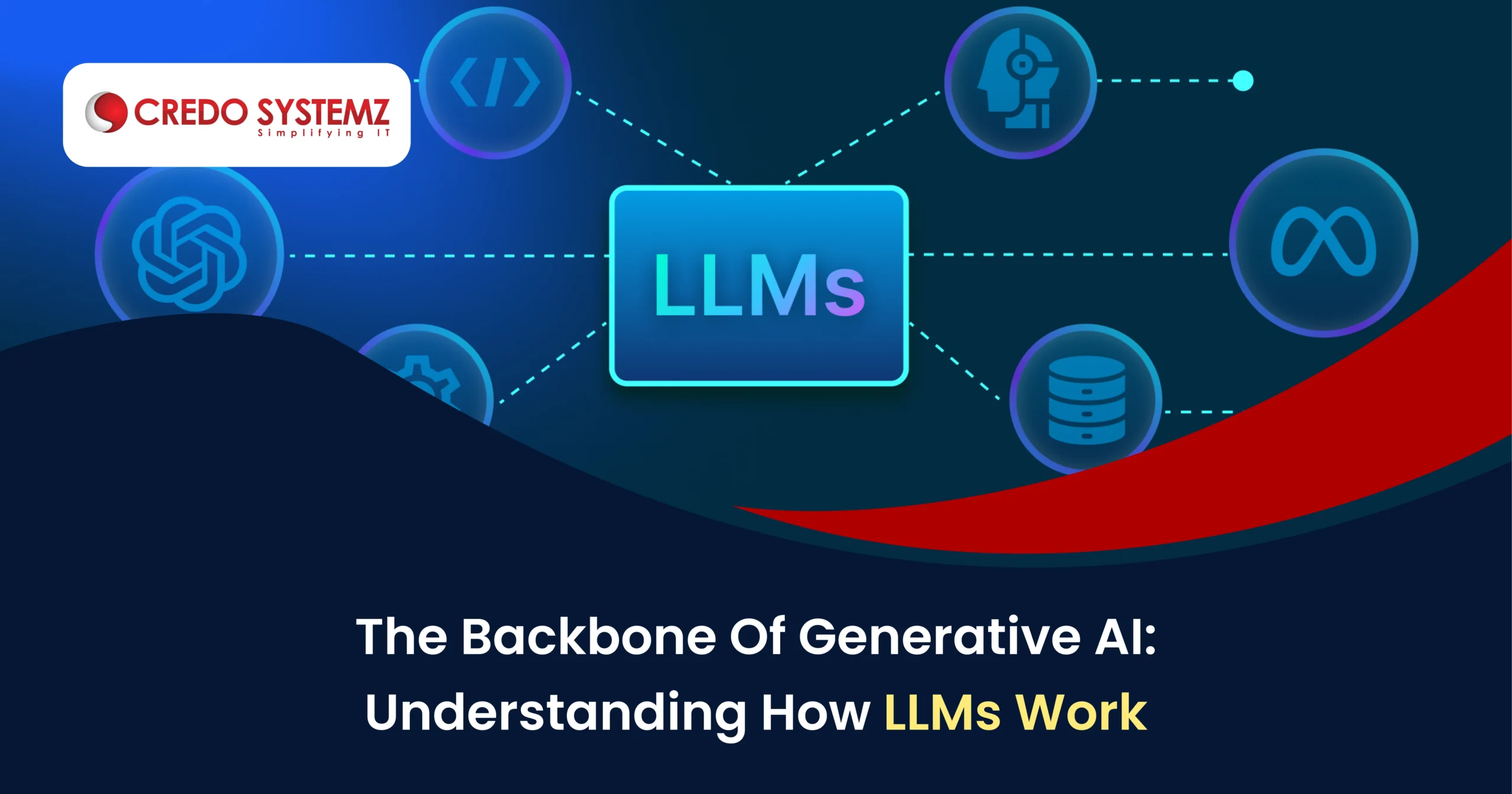
In the technology world, Generative AI has become inevitable, with tools like ChatGPT, Google Gemini, and Microsoft Copilot. It is showing just how powerful artificial intelligence can be in mimicking human-like creativity. At the heart of these lies a crucial component: Large Language Models (LLMs). Understanding how LLMs work is essential to grasp the backbone of generative AI.
Large Language Models (LLMs)
Large Language Models are a type of artificial intelligence model which is designed to understand, process, and generate human language. These models are trained on massive datasets like books, articles, websites, and other text sources—to learn patterns, grammar, context, and nuances of language.
Popular examples:
- GPT (Generative Pre-trained Transformer) by OpenAI
- PaLM by Google
- LLaMA by Meta
- Claude by Anthropic
The Core Technology: Transformers
LLMs are built using a deep learning architecture called the Transformer that was introduced by Google in 2017. The transformer revolutionized natural language processing with two key features:
- Attention Mechanism – Allows the model to focus on relevant words in a sentence, regardless of their position.
- Self-Attention – Helps the model understand relationships between all words in a sentence simultaneously.
This architecture enables LLMs to generate more coherent and contextually accurate responses by processing text more efficiently.
How Do LLMs Learn?
LLMs learn to generate human language by undergoing two major training phases:
Pre-training
The model is pre-trained by feeding vast amounts of text data. It learns to:
- Predict the next word in a sentence
- Gain an understanding of grammar, facts, reasoning, and language structure
Fine-tuning
The model is then trained on specific tasks such as answering questions, summarizing text or aligning with human values using methods like Reinforcement Learning from Human Feedback.
Key Capabilities of LLMs
LLMs are the backbone of generative AI applications across industries and can perform a wide variety of natural language tasks:
- Text generation (stories, essays, code, emails)
- Summarization
- Translation
- Question answering
- Sentiment analysis
- Conversational AI (chatbots)
Why Are LLMs So Powerful?
The “large” in LLM refers to the billions or trillions of parameters they use for deep understanding and language generation.
LLMs can understand long contexts and subtle language cues. They can perform tasks without explicit training based on minimal examples or instructions.
Challenges and Limitations
LLMs have a few limitations like:
- Hallucinations: They can generate incorrect information.
- Biases: Trained on human-generated data and they may inherit societal biases.
- Resource Intensive: Training and running LLMs require significant computational power.
- Lack of True Understanding: LLMs mimic understanding through patterns. They don’t “think” like humans.
The Future of LLMs in Generative AI
The field is evolving rapidly by developing smaller, efficient models without losing capabilities. Multimodal LLMs can understand and generate text, images, audio, and video (e.g., OpenAI’s GPT-4o and Google Gemini). More Ethical AI research is ongoing that focuses on making LLMs fairer, safer, and more transparent.
Stay Updated as AI is evolving. Follow blogs, join communities, and attend AI meetups or webinars.
Conclusion
To conclude, Large Language Models are the engines which power the rise of generative AI. From writing poems, stories to coding software and web applications, their ability to understand and generate human language has transformed various industries. Understanding how LLMs work will prepare us for the future.
To learn Gen AI, Credo Systemz offers the best Gen AI training in Chennai using AI experts.
Want to know more about the course curriculum, career counseling, or video references? Just ping us on WhatsApp!

Join Credo Systemz Software Courses in Chennai at Credo Systemz OMR, Credo Systemz Velachery to kick-start or uplift your career path.
